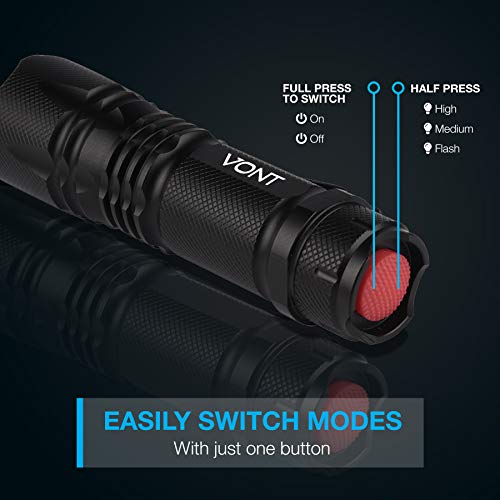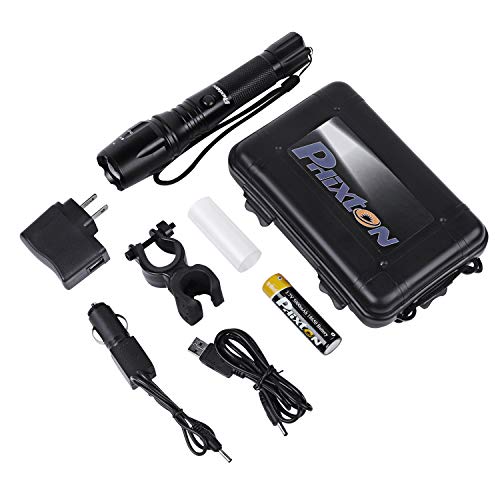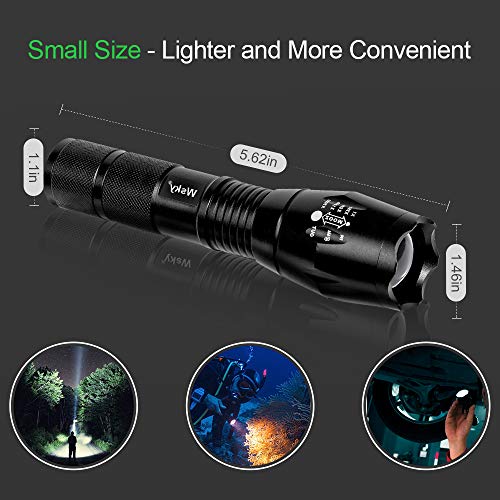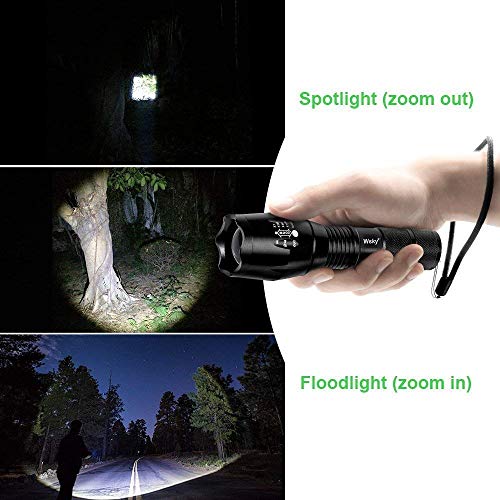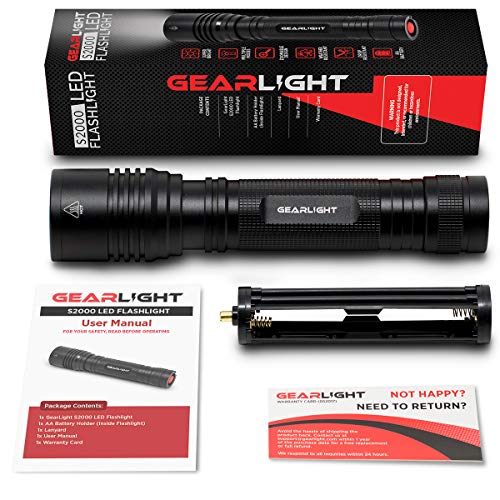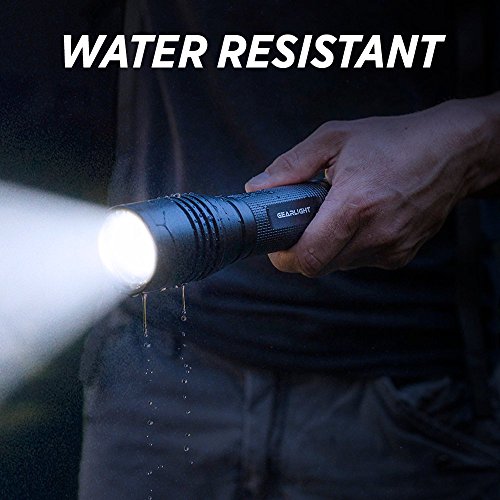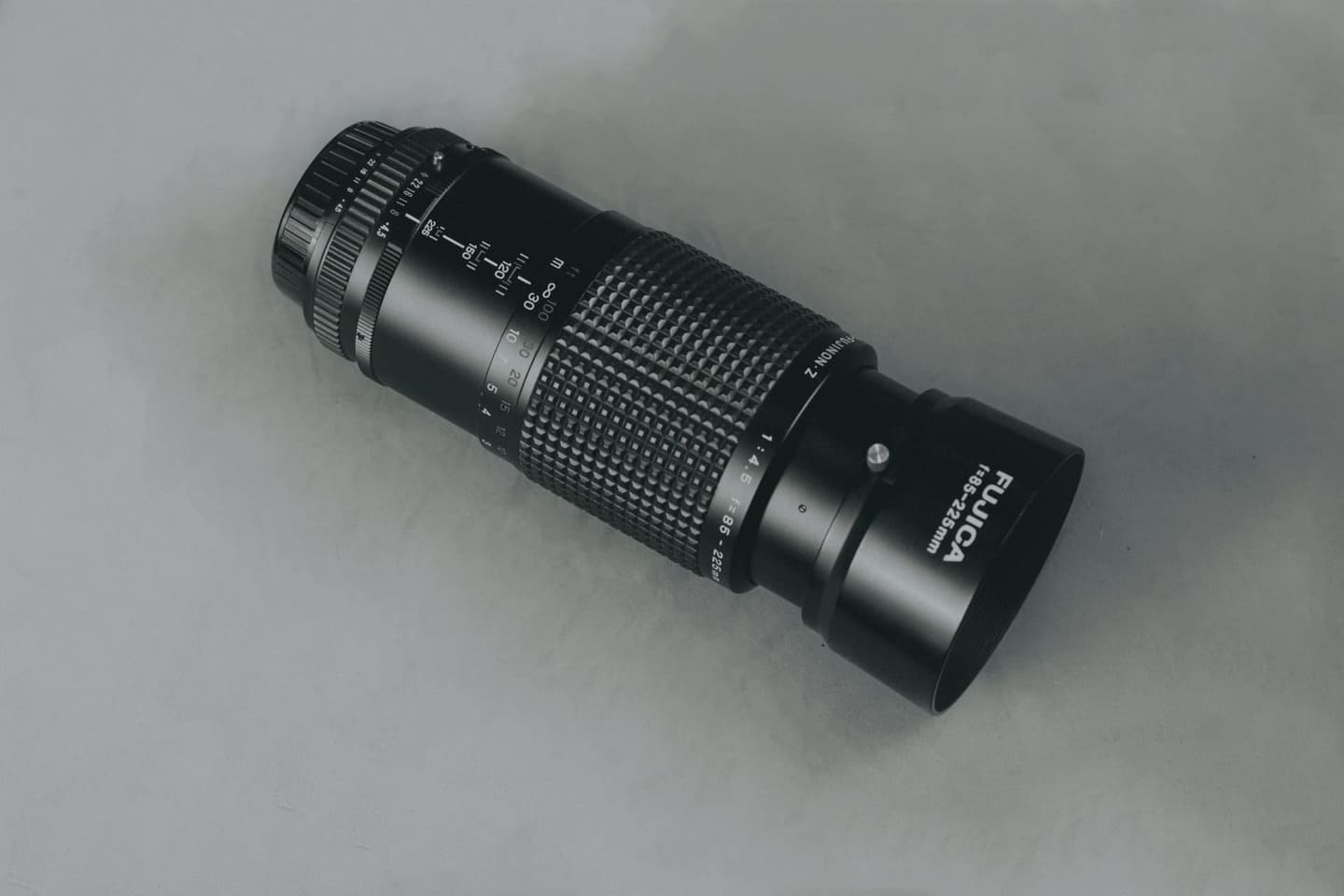The best survival flashlight is an essential part of any survival kit, you never know what danger’s you will have to face; but it is likely you won’t last long if you can’t see them.
When planning your survival kit, I always recommend having two flashlights and plenty of spare batteries to power them.
Below you will find my pick of the top 5 best survival flashlights available on the market today, with a comprehensive buyer’s guide detailing all the information you should know before making your purchase.
Vont LED Tactical Flashlight
Vont has crafted an extremely compact, efficient survival flashlight that delivers 400 lumens in a small package. This flashlight fits perfectly in the palm and requires little room in your bag if space is a concern.
Billed as ‘almost indestructible,’ the Vont LED Flashlight is built from military-grade materials and is IPX rated for immersion in water. Vont themselves have stated that this flashlight has survived being run over by a truck.
The surface of the Vont is detailed to provide extra grip during adverse weather, to ensure it is always to hand. Three modes are available; high, medium, and flash, and the beam is easily adjusted from spotlight to floodlight by rotating the lamp.
Small enough to fit in any pocket, the Vont also has a handy belt clip just in case.
Read the full post_title; ?> review
Pros
- Budget-friendly
- Small
- Durable
Cons
- Not useful as a self-defense weapon
Phixton Rechargeable Tactical Flashlight
If its versatility you’re looking for, then you may have reached your journey’s end. The Phixton is a powerful tactical flashlight that delivers an adjustable beam of light, housed in a durable aluminum casing.
Coming complete with a plethora of accessories, the Phixton will have you ready for any situation. Powered by AAA batteries, you can charge this flashlight via USB, wall outlet, or 12V car adaptor, and it also comes with a rechargeable 18650 battery just in case.
One downside for the Phixton is that it has a lower IPX rating than I would generally want, but the versatility still makes it a front runner when looking for a survival flashlight. You can keep the torch and spare batteries in your pack and any charging accessories in your car, keeping your prepared for any situation.
Additionally, in the box, you will find a bike mount clip that can be used to attach the flashlight to various surfaces, which is perfect for situations where visibility is key, such as using the SOS mode to attract attention.
Read the full post_title; ?> review
Pros
- Versatile
- Durable
- Adjustable
Cons
- Lower IPX rating
WSKY LED Flashlight
Here we have a versatile survival flashlight that comes with three interchangeable heads to adapt to your situation. Powered by AAA batteries (always carry spares), the Wsky not only features a regular LED bulb head, but it also comes with a flexible goose-neck lamp and COB work light attachment.
Each attachment has its situational uses, and I’m sure the creatives among us could think of many more, but the ability to go hands-free is invaluable; with the magnetic base not only allowing the torch to be stuck to magnetic surfaces, but it can also be used to retrieve small metal objects with ease.
Made from a durable aluminum alloy and rated to IPX-7, the Wsky LED flashlight has three levels of illumination for each head; low, high, and strobe, allowing you to conserve battery or be more noticeable as required.
Realistically I wouldn’t carry all the peripherals in my survival backpack, but they are a great addition to keep stored in your car for emergencies.
Read the full post_title; ?> review
Pros
- Versatile
- IPX-7
- Magnetic base
Cons
- Space intensive
GearLight LED Flashlight S2000
The S2000 is a mid-sized flashlight that delivers 1200 Lumens while still being small enough to fit in the most conservative backpacks. Five modes are available; high, medium, low, strobe, and SOS, and the illumination is adjustable from spotlight to floodlight, allowing you to focus the beam on objects up to 1000m away.
Powered by AA batteries (always carry spares), the S2000 is made from a rugged aluminum body that has been IPX rated for water resistance. Being a mid-size flashlight, the S2000 has the potential for self-defense applications, but if this is a concern, I would recommend a larger model.
A flashlight I would consider keeping in your SHTF or survival bag, especially if you plan to travel by vehicle as the SOS and strobe features are invaluable in case of emergencies.
Read the full post_title; ?> review
Pros
- Powerful
- Durable
- Adjustable
Cons
- Not for space conscious users
Buyer’s Guide
Flashlights are often underrepresented in the survival community, with many people opting to pack a cheap dollar store flashlight in their bug-out or SHTF bag.
Flashlights should be given more attention when compiling your kit list. They can be the difference between life and death in some situations, even doubling up as a self-defense weapon when necessary.
There will be a lot of demands placed on your flashlight when it comes time to use it, so you need to know how to get the best survival flashlight for you.
Below is all the information and critical points you will need to consider before purchasing any new gear.
Size
Often unconsidered, especially when preparing your first bug-out bag, is the overall weight and capacity of your backpack. How much volume your pack is capable of handling is one of the primary limiting factors to base your gear on.
Overall weight is an issue too; even the smallest bug-out bags can become cumbersome when filled with excess tech.
Conversely, bags that are overburdened with gear can have an impact on your health, if you are traveling significant distances on foot.
All survivalists should be aware that the ideal bug-out bag weight is 10% of your body weight. Weight can be increased but will depend on your physical aptitude and should still not exceed more than 20% of your body weight.
For example:
If you weigh 150lbs, the ideal pack weight would be 10% of 150lbs = 15lbs; for those of you in exceptional physical condition, you can work your way up to 20% of 150lbs = 30lbs.
Vacant space in your backpack is prime real estate and should be used as efficiently as possible, to get the most from your kit. Your kit bag won’t be very useful if it is filled with only a couple of large items taking up all the room.
For this reason, it is better to find gear that performs equally as well but comes with a smaller physical footprint.
Unfortunately for us, tech that performs just as well in smaller packages typically commands a higher price tag.
Often survival enthusiasts opt for smaller palm-size flashlights, with some even opting for LED keychain style flashlights to make the most of their space.
If you do have the space available, larger strong-featured flashlights are a good choice, as they can double their use as a self-defense tool if needed.
I would be looking to incorporate a flashlight no longer than 8inches into my survival backpack, only choosing a more substantial model if I intended it to double as a cosh for self-defense purposes.
Battery Type
Flashlights intended for survival and bug-out situations have separate battery demands than a torch for everyday carry (EDC).
EDC torches are typically used little and often, whereas survival flashlights will only see use during emergencies, potentially for extended periods.
Since there is likely to be little to no access to power during these times, alkaline batteries (carrying spares of course) are the ideal choice.
Alkaline batteries are more commonly available than advanced technologies such as Li-ion, and still provide adequate power.
Because of their commonality, if for any reason you do run out of batteries (ALWAYS carry spares), the potential to scavenge extra resources is high.
The downside of alkaline batteries is that they can lose their charge over time and have the potential to leak acid, corroding your flashlight.
You should make it routine to regularly check your flashlight and batteries for damage and replace as necessary.
Bulb Type
LED bulbs are king; they are more energy-efficient, brighter, and last exponentially longer than incandescent bulbs. I would personally never recommend a flashlight that didn’t come with LED bulbs.
Lumens – Brightness
In survival situations, brighter is better. When you are in a pinch, the more you can see, the better; not only that, but in rescue situations, the more you can be seen the higher your chance of survival.
If you have a particularly powerful flashlight, you should be aware of the additional power drain, and pack spare batteries as appropriate.
For self-defense, you want to ensure a minimum of 100 lumens, as the flashlight can be used to blind potential assailants.
A flashlight with the ability to focus its beam from a spotlight to a floodlight adds a layer of adaptability that could prove useful. Reflecting surfaces behind the bulb will also help you get the most from your survival torch.
How many Lumens do you need?
- 1-20 Lumens: Reading maps, finding keyholes, walking in the dark
- 20-35 Lumens: General use indoors
- 35-100 Lumens: General outdoor use for hiking and camping
- 100+ Lumens: Tactical applications
- 1000+ Lumens: Search and rescue, extreme outdoor situations
Durable
Chances are if you are surviving in the wild or during a natural disaster, you are going to face some adverse weather, and your gear will need to survive along with you. Weatherproofing is measured with an IPX rating from 1 – 8.
For most basic applications, IPX-4 is the minimum you should be looking for, with IPX-7 or 8 being the ideal.
IPX Ratings
- IPX-0: No protection
- IPX-1: Protected from low levels of falling water in a normal operating position for up to 10 minutes.
- IPX-2: Same as IPX-1 but allows for up to 15 degrees of tilt from the normal operating position.
- IPX-3: Protection from spraying water, up to 60 degrees from vertical at 10liters/minutes with a pressure of 80-100kN/m2 for 5 minutes.
- IPX-4: Protection from splashing water, same as IPX-3, but all angles are covered.
- IPX-5: Protection from jets of water.
- IPX-6: Protection from heavy sea waters.
- IPX-7: Can be immersed in up to 1m deep water’s for up to 30 mins.
- IPX-8: Can be submerged in water for continual use, conditions identified by the manufacturer.
Your survival flashlight should also be sturdy in its construction. Lover’s of tactical flashlights tend to prefer anodized aluminum, but is that always applicable for bug-out bags and survival situations?
Metal flashlights are, of course, hard-wearing, but many plastic flashlights have proven themselves to be just as tough and durable.
Plastic flashlights have an advantage in situations where there are going to be sudden unexpected climate changes, from hot to cold, for instance.
If you are only using the flashlight for general lighting applications, then plastic may be a better choice, simply due to the reduction in weight.
Anodized aluminum torches are better suited for situations that demand durability and toughness from your equipment.
If you intend to double up your flashlight as a self-defense weapon, then aluminum is a clear winner.
Your material choices will come down to personal preference and situations, whether you favor toughness over durability, self-defense over weight, and any other factors that might come into play.
Self Defence
Numerous survival flashlights can double as a kubotan or cosh if required for self-defense against animals or human aggressors.
However, if you already have a reliable form of self-defense (firearm, machete, pepper spray, etc.), then you may not require a flashlight that doubles as a defense tool.
Even if you do have a method of self-defense already accounted for, it is still good to have as many options as possible when it comes to protecting yourself.
Recap
The versatility of the Phixton Rechargeable Tactical Flashlight makes it my number one pick. Not only is it sure to meet the demands of survivalists everywhere, but the charging options are hard to ignore.
I hope this article has provided you with all the information you need when looking for the best survival flashlight. Have you sued any of these models before? Let us know in the comments below what you thought of them.
At Survival Front, I am always striving to deliver the best informational content for survivalists. So if there are any topics you would like to see me cover, please don’t hesitate to get in contact and let me know.
Share the Love
If you found this post useful, please let others know about it by sharing it.







